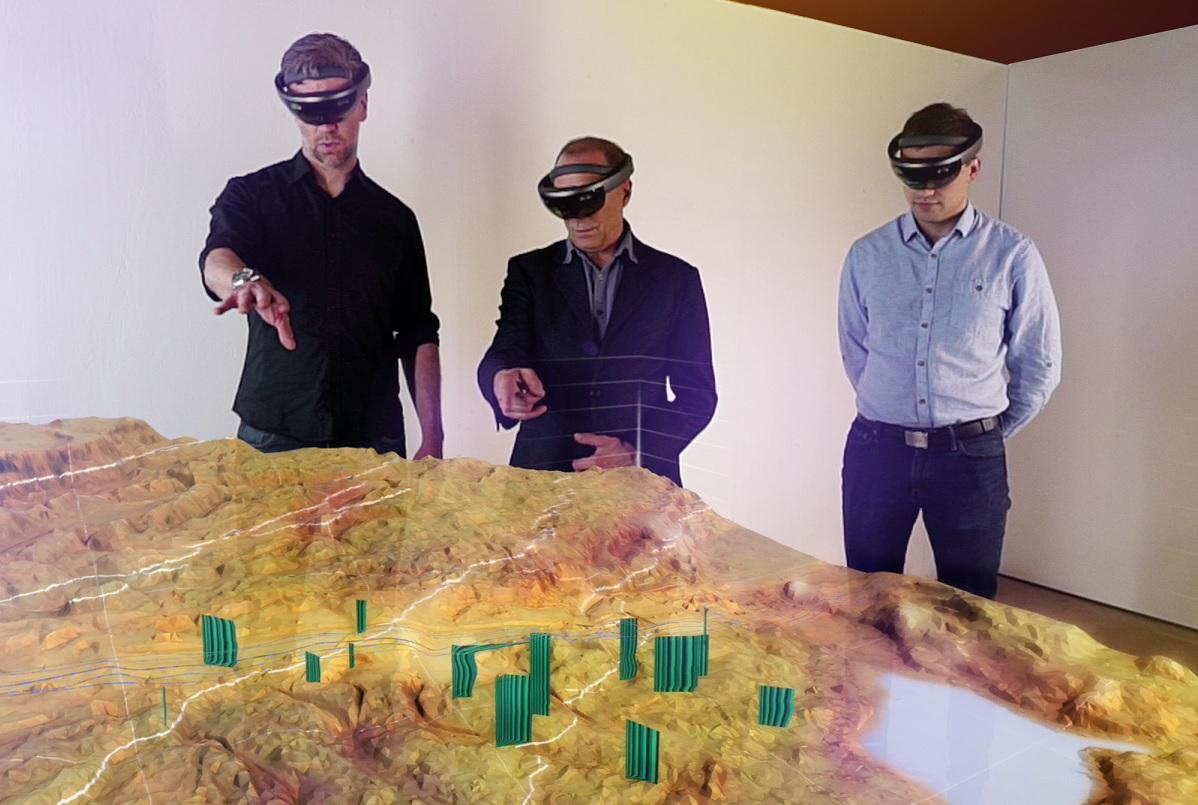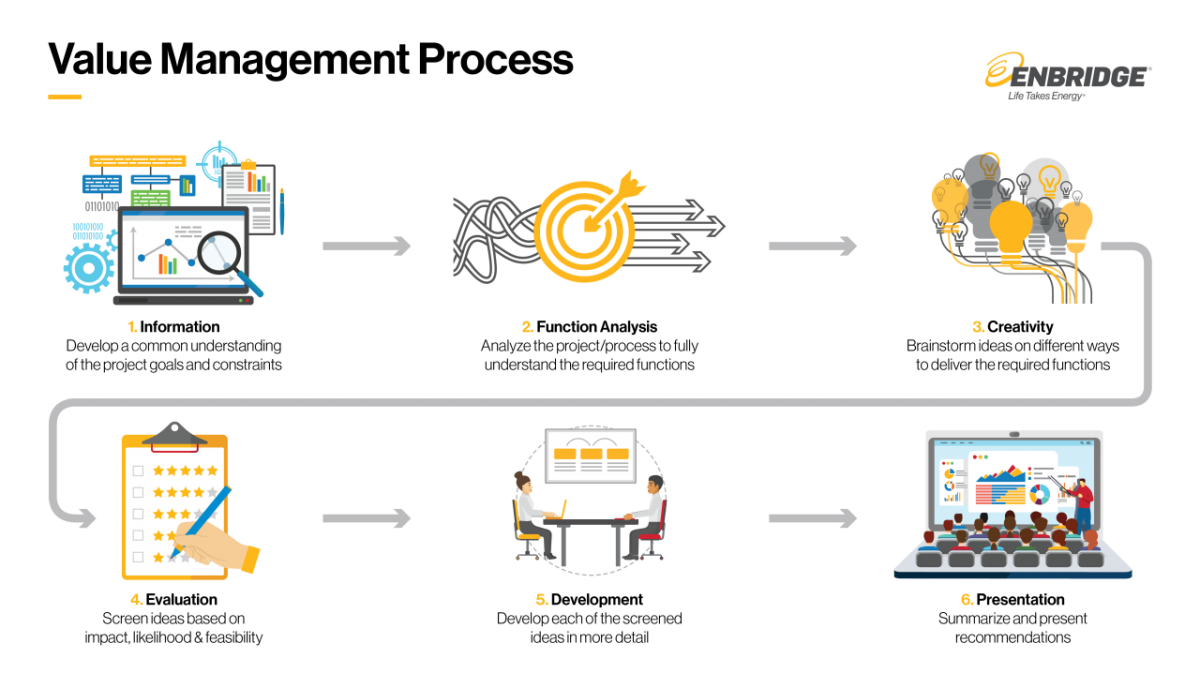Enbridge: New Ways of Working
Our industry is changing. The ways in which energy is delivered, the types of energy delivered, and the impact of that delivery on the world around us are changing.
Originally published in Enbridge's 2020 Innovation Report
Enbridge has been, and will continue to be, part of that change: our diversification into natural gas, our investments in wind and solar, and our activities involving renewable natural gas and hydrogen have placed us on the leading edge of the energy transition.
Beneath these visible changes a more profound adaption is underway, one that is making changes in the way we work and that will help to ensure ever greater value for our customers, shareholders, and stakeholders alike. Some of these changes are required to enable a focus on innovation, and some flow naturally from the innovative thinking this focus seeks to inspire in our team.
An ‘innovation mindset’
It begins with cultivating an innovative mindset—encouraging creativity, welcoming diverse ideas and perspectives, and making ideation a welcoming place for all to join in.
It continues with reaching across the disciplines, prioritizing relationships, establishing stronger dialogues and creating deep partnerships between teams executing on innovation and the end users (and other stakeholders) of those innovations.
It’s strengthened and nurtured by a focus on ensuring the outcomes flow from the need, understanding the total value opportunity and prioritizing and executing accordingly.
This value-driven mindset then completes the loop, honing the practice of innovation and motivating clarity in identifying needs and inspiration for new solutions.
Encouraging this mindset will not only support greater innovation but will also help to establish a new rhythm for engagement, connection and performance in our evolving business environment.
Skills for sustainable success: Sustained Business Optimization (SBO)
Emerging from the institution of an innovative mindset, and the practices of agile and design thinking, is an understanding that competitive organizations should adapt and evolve not only the ways in which we work, but the key skills we possess to build a future of sustainable success and meet the demands of the new economy.
Enbridge has established the Sustained Business Optimization (SBO) group as a focal point for driving the initiatives that will help build that future.
Underpinned by a consistent language, toolkit and framework, the SBO team will partner with the business to draw upon the existing skills and experience of our people, develop new organizational capabilities and accelerate the delivery of significant value for the organization.
Key to this success will be enabling collaboration and connection across the enterprise, facilitating the sharing of learnings and leveraging the broad diversity of thought and experience of our people. Our business units and functional owners will be positioned to drive value in the areas of revenue enhancement, cost savings and employee experience.
“The SBO will play a key role in supporting and empowering teams across the enterprise to find incremental revenue opportunities and cost efficiencies, optimize processes, eliminate waste and create an environment that fuels curiosity and drives innovation.”
—Colin Gruending, Enbridge’s Chief Financial Officer
‘Roadmapping’: Needs-focused, value-driven thinking
When faced with a challenge, it can be difficult to resist the urge to move straight to solutions, because that’s often where the fun is. This natural inclination, however, tends to bypass the important step of ensuring we have accurately captured the true “need,” and can lead to the proposal of non-optimal solutions.
To avoid the rework that often comes along with our desire to move straight to ideation, we follow systematic processes that seek first to understand what our need or goal truly is. These processes encourage the further development of the innovative mindset that supports creative problem solving and innovative thinking by placing the focus on efficacy (“doing the right things”), helping at the onset to direct us towards greater eventual success.
One way we identify needs, typically at the department level, is through the practices of “roadmapping” and through facilitated discovery of needs. Roadmapping is the process of identifying the landmarks of your innovation and technology journey, of proactively building a vision for the future. These roadmaps are helpful in understanding the technology landscape of the present and the future, keeping us focused on our priorities and managing continued change.
The process begins by understanding each team’s role and identifying the current technologies used to support the functions they perform. Discussion then moves to understanding the gaps and opportunities for enhancement. Roadmapping exercises lay out technology development needs and interests over the ensuing three-year period.
Value Management: A focus on functions
One in-depth approach to this comes from the world of Value Management and the application of functional analysis to break down the subject to the underlying functions it is intended to perform.
By starting with an analysis of these fundamental functions, we work to clearly define the purpose of solving the problem at hand and the expected benefits of the stakeholders, which in turn provides a clearer path to a more optimal solution.
VM is a systematic approach that is used by a multi-disciplinary team to improve the value of a project, process or business practice through an analysis of its functions—outcomes that a project, process, product or service is expected to achieve. These functions help ensure clarity and alignment of stakeholder needs.
The focus on functions is what distinguishes the Value Management approach. In VM, function analysis supports creative problem-solving by moving the focus away from the expected solution and placing the focus on the required performance or need.
This approach can be applied to a department, a project, a process, a product or a service. The true power of this approach is that it methodically directs our thoughts to a consideration of value—appraising how well a given solution satisfies stakeholder needs; considering what is involved for implementation; reducing the focus on cost; and encouraging potential fit-for-purpose alternatives.



